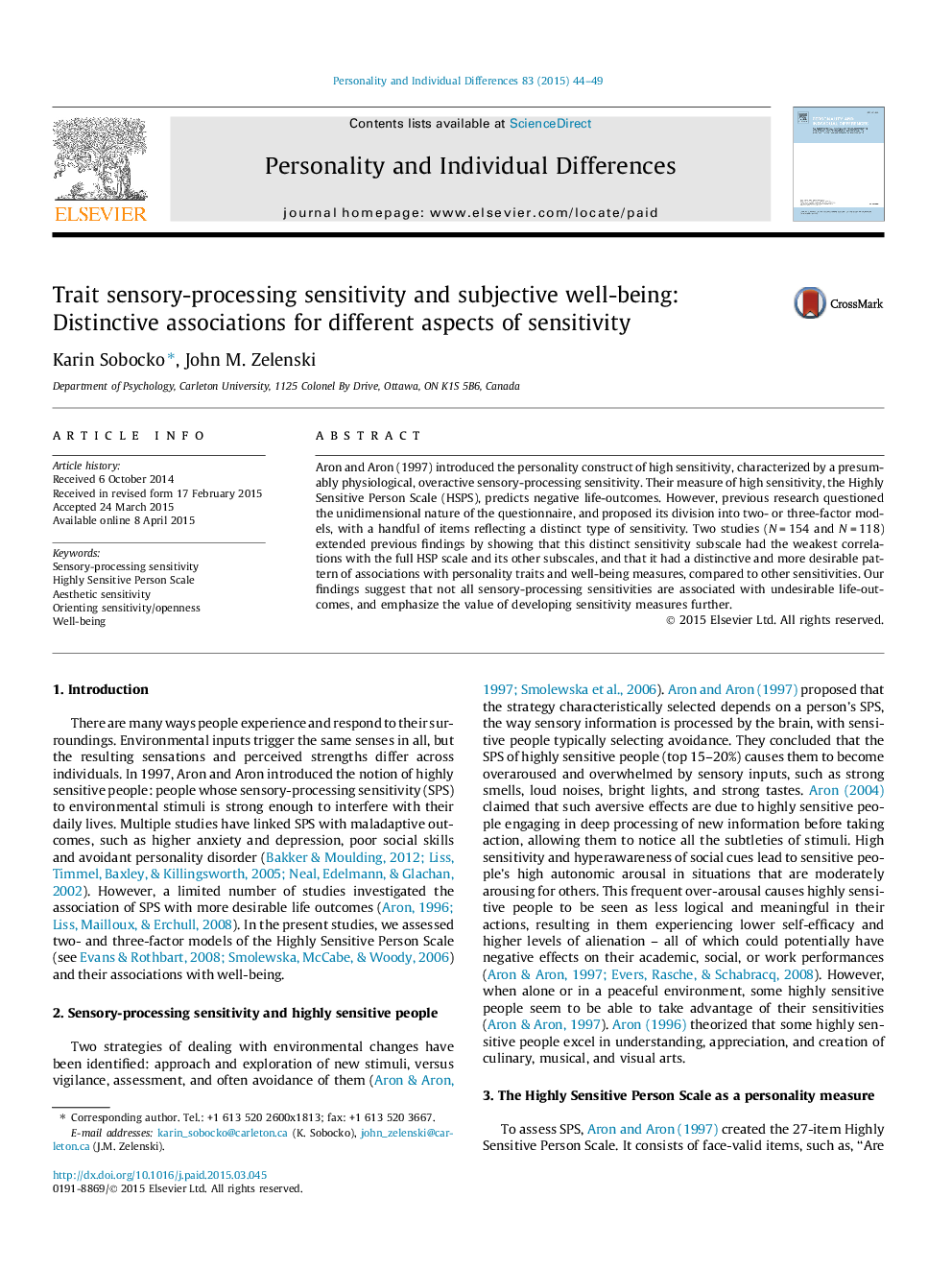| Article ID | Journal | Published Year | Pages | File Type |
|---|---|---|---|---|
| 890130 | Personality and Individual Differences | 2015 | 6 Pages |
•We tested if all types of sensory sensitivity were associated with lower well-being.•Associations among sensitivity types and personality and well-being differed.•Aesthetic and orienting sensitivities’ predicted more desirable outcomes.•The need for a more comprehensive sensitivity measure is discussed.
Aron and Aron (1997) introduced the personality construct of high sensitivity, characterized by a presumably physiological, overactive sensory-processing sensitivity. Their measure of high sensitivity, the Highly Sensitive Person Scale (HSPS), predicts negative life-outcomes. However, previous research questioned the unidimensional nature of the questionnaire, and proposed its division into two- or three-factor models, with a handful of items reflecting a distinct type of sensitivity. Two studies (N = 154 and N = 118) extended previous findings by showing that this distinct sensitivity subscale had the weakest correlations with the full HSP scale and its other subscales, and that it had a distinctive and more desirable pattern of associations with personality traits and well-being measures, compared to other sensitivities. Our findings suggest that not all sensory-processing sensitivities are associated with undesirable life-outcomes, and emphasize the value of developing sensitivity measures further.
